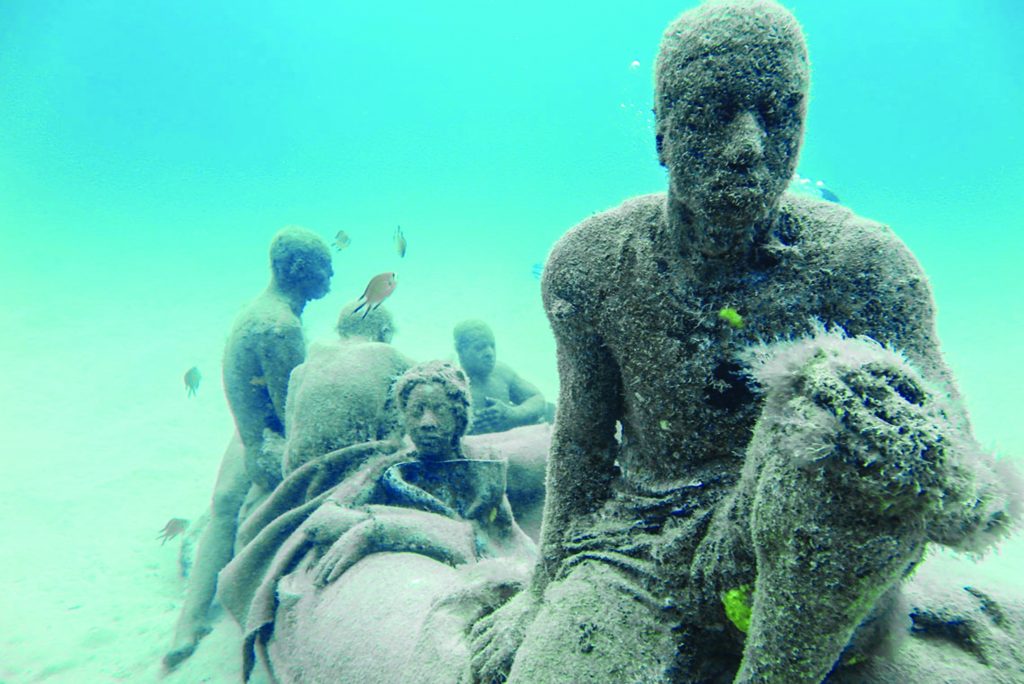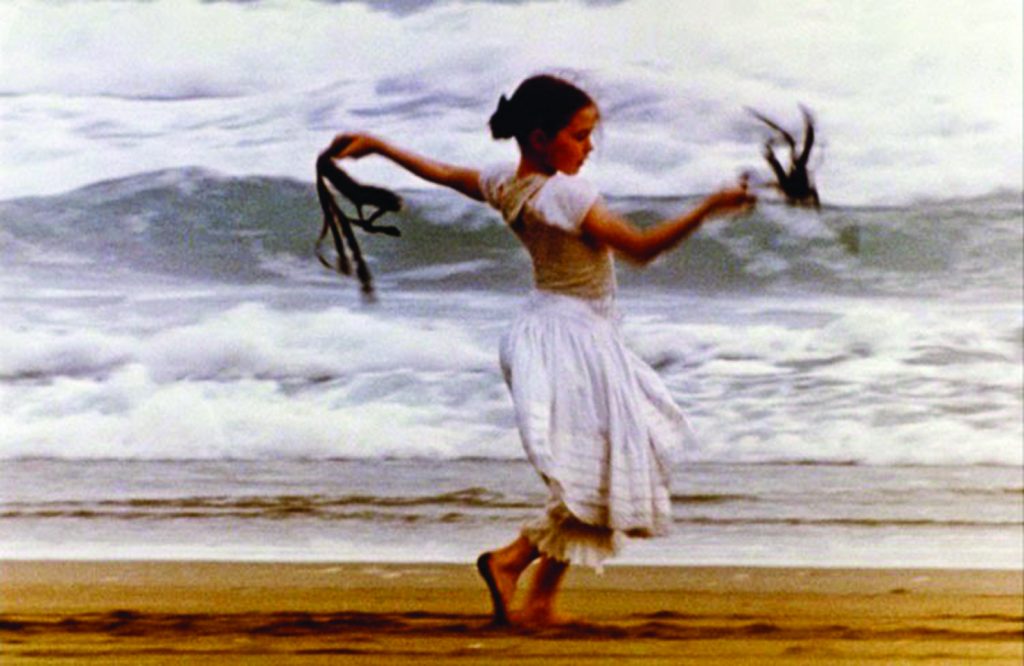The Sea, the Sea, the Year-Round-Quality Sea
I love Għadira in the winter when it drizzles. When it is neither bustling nor garish and when, in its abandonment, it reminds me of the wide expanses of deserted beach and roaring waves that suit the cinema so well.
The holidaymakers have all disappeared and the beach is empty except for a few wooden boats drawn up high on the sand and a couple of shuttered kiosks, unkept and forlorn like bedraggled old characters waiting for lovers who will never return. The overcast sky stretches outwards, on and on over a turbulent, thundering sea, grey and cold.

Scattered around on this pale, gritty canvas, are the dark, distant spots of other company. Like me, they are here to breathe in the salty scene and to reconnect with the horizon. Lonely figures stuffed in windcheaters and woollen mufflers stamp along with their dogs in tow. The dogs bound about excitedly over the wet sand, running up to groups of youngsters sitting huddled in tight knots, and the chilly air is suddenly pierced with elated shrieks and high-pitched laughter.
There is a wetness in the air, a whiteness even, a magic in the mingling of the sea spray, the waves breaking on the sand’s shifting edge and low-lying, wind-driven clouds. It is the whiteness of timeless films I love, the whiteness of a swarm of boys’ sports shirts running to the music of Vangelis, of a little girl’s ballet dress spinning around to Michael Nyman’s piano, or of Jean Paul Trintignant’s battered white car driving on the damp sand. Cha ba da ba da.
That is not to say there wasn’t any whiteness in the crowded beach of Mongibello one simmering summer day in the life of the talented Mr Ripley. “You’re so WHITE!” exclaimed Jude Law, irritated that his sun-kissed siesta had been interrupted by the awkward, pale-looking Matt Damon in his waist high mustard trunks and nerdy specs. But as much as surprising stories are spun on the edge of a summer sea when it sizzles, winter is the setting for intimate confessions, meditations on life and professions of love.
As mushy as this all sounds, I couldn’t help but cringe on reading the news the other day to learn that it is the intention of the Ministry for Infrastructure, with the support of the Ministry for Tourism, to embark on a project for the upgrading of Għadira Bay, an operation costing two million Euro, that “will see the reconstruction of pedestrian areas at the shorefront, and the installation of new lights, CCTV systems, fountains and public convenience facilities as well as free Wi-Fi”. (Times of Malta, 28th May, 2021)
“We have to change the approach we take to maintaining infrastructure in tourism areas and embrace a new mentality for our zones to be maintained and accessible all year round,” the Minister declared. “We are approaching these projects with year-round quality in mind”.
Seriously? Two million Euro worth of lights and CCTV cameras and toilets and free Wi-Fi? Ah no, of course, I forgot to mention there’s a fuddy-duddy fountain feature marvellously marooned on the centre of a roundabout and surrounded by ribbons of, no, not algae, but tarmac. The drawing illustrating the proposal that accompanies the press announcement must have taken its creator all of 27 minutes 13 seconds to realise, including time to look for a chair, log into a computer, a pause for a cup of tea, a good dose of social media distraction and some intense, albeit brief, head scratching. All in the name of that mysterious statement that the Ministry’s projects are approached with ‘year-round quality’ in mind. Because, I guess, a sandy beach that changes its mood in winter is capricious and unreasonable – a hindrance to cash-flow and a liability to the economy. As is the erratic nature of the seasons that a Minister, any Minister, who feels omnipotent like Poseidon himself in a dark blue suit and Rolex watch, is capable of reigning in with simple tools like floodlights and CCTV cameras and public toilets.
Progress is relentless. If a community is alive and thriving it must move forward. As much as we might all look nostalgically back at the past, there is no stopping us being blown ahead by the strong winds of change. But although rebranding Għadira Bay may be a good thing, I cannot but ask why we should sacrifice the nature and future of this bay, one of Malta’s most important natural assets and tourist attractions, for the sake of issuing a tender for the procurement of lights and CCTV cameras. Could it be that our command of language has been reduced to what is required to fill the pages of a real estate magazine, and that when we are not talking about buildings, about penthouses and garages and square metres and numbers of bedrooms, our imagination fails us? Are we at a loss for words to describe our vision for a rejuvenated sandy beach, constraining us, as a consequence, to resort to naming items out of a technical brochure? Do we have no romantic notion about making a contribution to the beauty of an area? Who knows, perhaps that rare and precious moment of artistic endeavour will be limited to a discussion of the tender adjudication board as to whether the cameras and light luminaires should be black or white. White I would say, white as the clouds in the winter sky and the waves breaking on the shore, white as Matt Damon’s pale body in Mongibello…

So, as I suppose you have gathered, I think we are getting it altogether wrong. And just in case you happen to capture some free Wi-Fi, generously offered by the powers-that-be, here is an example of a project that you could look up on the internet, that is designed to add another layer to the evolution of a particular marine environment, and that was realised to preserve the area in a sustainable way, to create a tourist attraction that is financially profitable and to add an artistic monument to the place.
The Museo Atlántico is completely submerged under the Atlantic Ocean, a poignant reminder of the often-destructive impact of Man’s intervention in the natural world. The underwater museum, the first of its kind in Europe, situated off the coast of the island of Lanzarote, consists of 300 man-made sculptures, featuring amongst a myriad of others, a raft of refugees on an uncertain voyage or humans posing for selfies or taking pictures, that change and transform over time as the maritime currents react with them. In this way, an ecologically responsible interaction between humans and ocean life is created.
The sculptures were created by British artist Jason deCaires Taylor, who has created similar works in both Cancun, Mexico and Grenada in the West Indies, the latter listed as one of National Geographic’s Top 25 Wonders of the World. They are made of concrete that is pH-neutral and nontoxic to marine life, serving as the perfect base for microorganisms to inhabit and form artificial reefs where biodiversity can thrive in once-barren areas. The sculptor has also built artificial reefs that attract coral growth and help protect delicate natural coral reefs.
In essence, this unique museum is itself an evolving ecosystem – a collection of living artworks that change over time with their environment. It has become extremely popular with divers, snorkelers and art-lovers alike. The cost of the project, I was able to check, again thanks to the free Wi-Fi that I was extremely lucky to avail myself of, was 700,000 Euro. If we must dump concrete, let it be Art!
They say that the best things in life come free, like poetry and Wi-Fi. So, by way of concluding, here are some priceless words from Lord Byron’s Childe Harold’s Pilgrimage that, it is an enormous consolation to know, no amount of lights and CCTV cameras and projects aimed at year-round quality will ever be able to destroy.
There is a pleasure in the pathless woods,
There is a rapture on the lonely shore,
There is society, where none intrudes,
By the deep Sea, and music in its roar:
I love not Man the less, but Nature more,
From these our interviews, in which I steal
From all I may be, or have been before,
To mingle with the Universe, and feel
What I can ne’er express, yet cannot all conceal.








